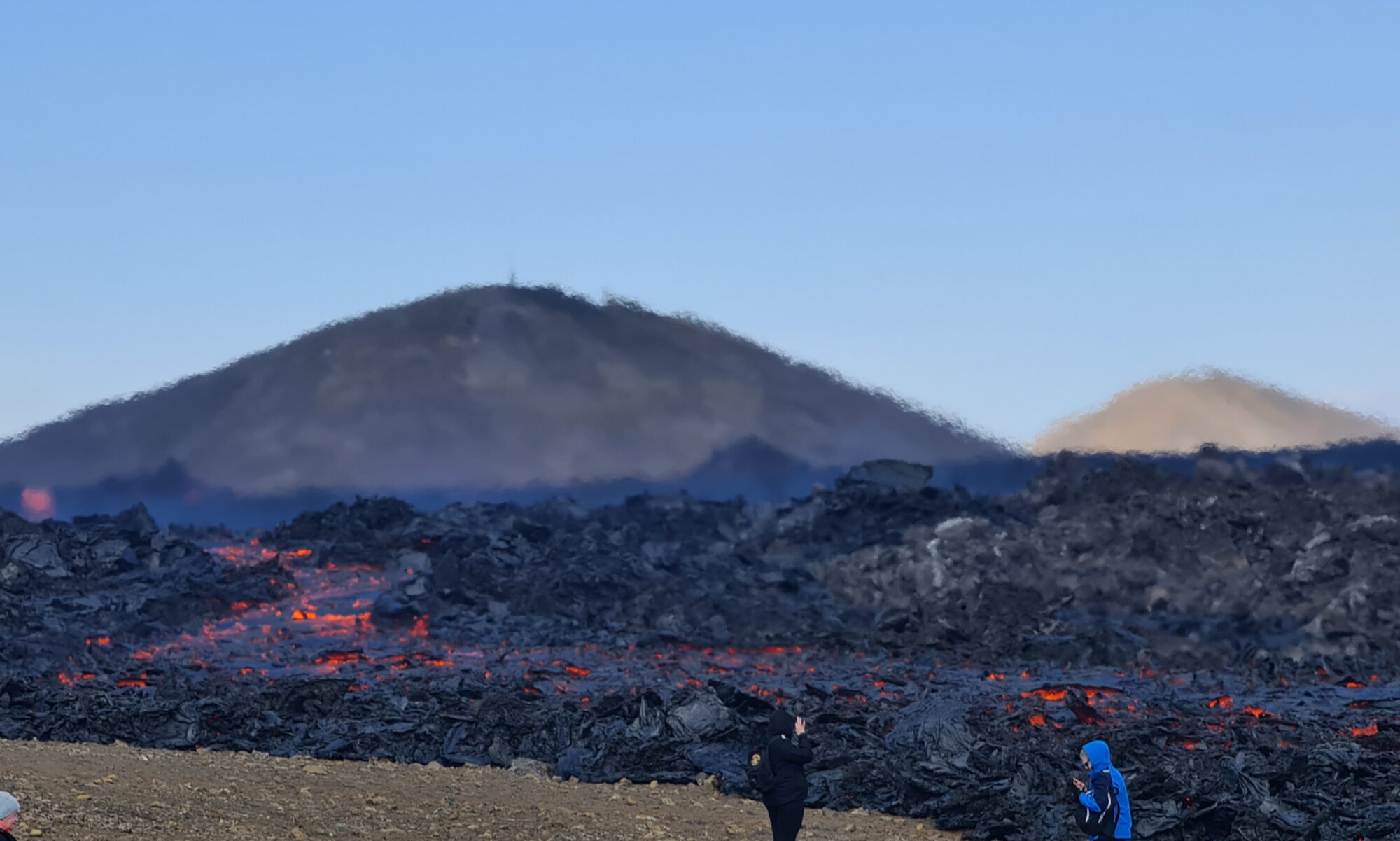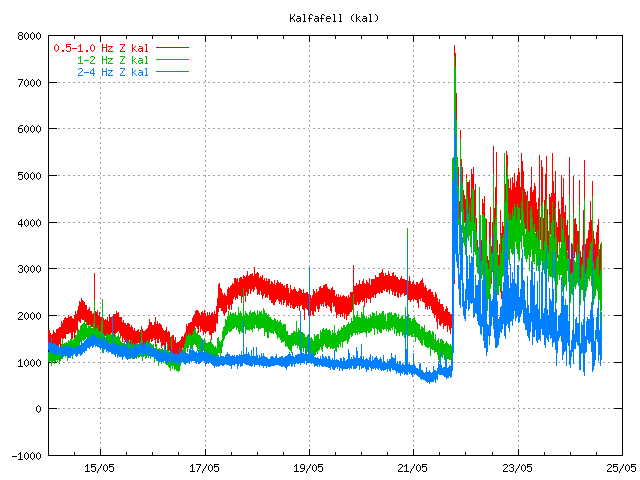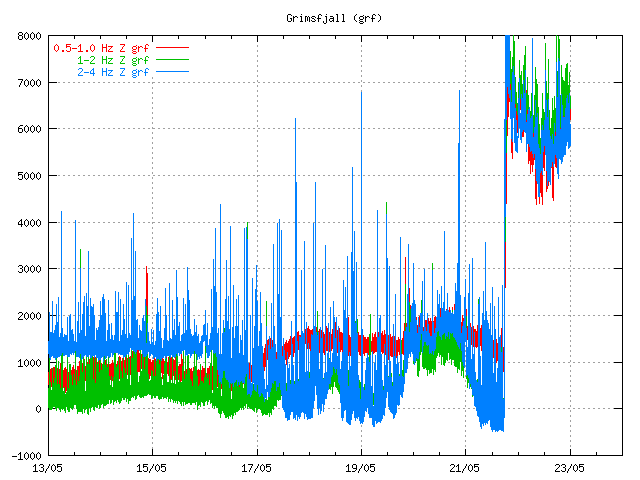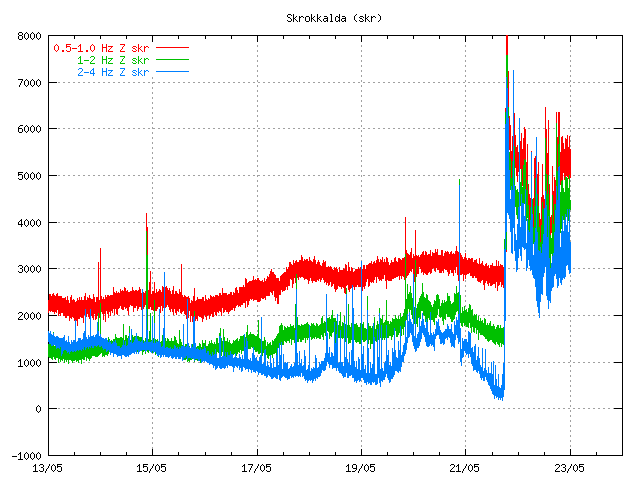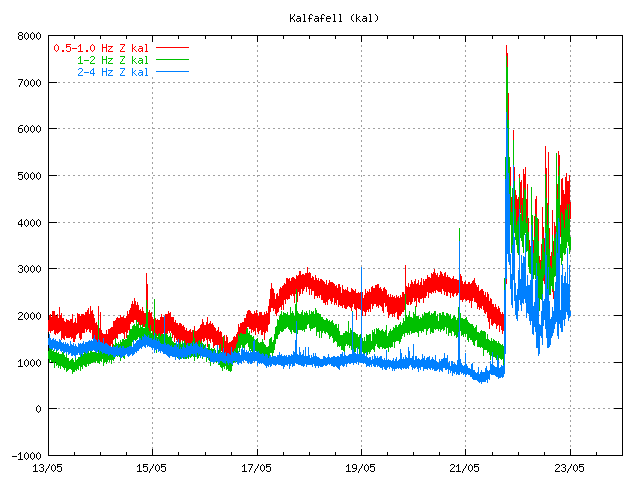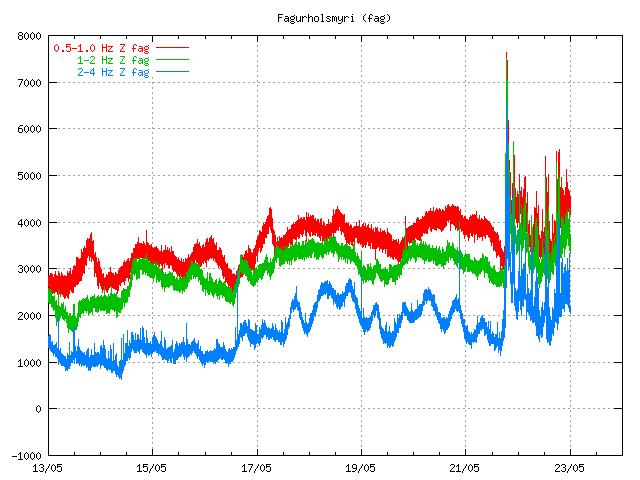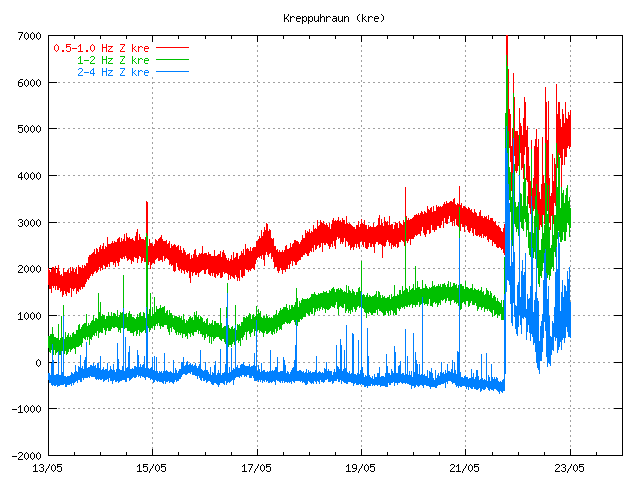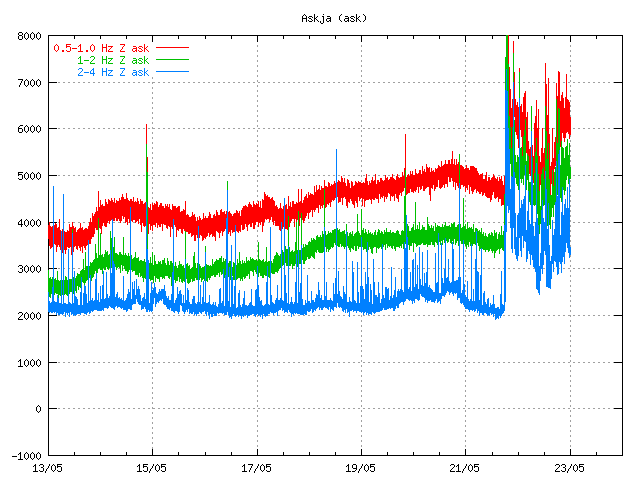It has been reported in the news that the eruption in Grímsfjall volcano (also known as Grímsvötn) is getting less powerful as the time passes. This is perfectly normal for an eruption in Grímsfjall volcano.
This can also be seen on tremor plots around Grímsfjall volcano. They clearly show the eruption getting less powerful over time. It has also been reported in the news that the material that is being erupted is now estimated to be 100 tons/second at the moment. But just yesterday it was 1000 tons/second and up to 2000 tons/second. The eruption is currently stable, even if it smaller then it was in the first few days. It is also not certain if this eruption is going to turn into lava eruption. As there seems to be enough water to continue ash phase of the eruption for the next few days.
Grímsfjall SIL station. It clearly shows the eruption getting less powerful over time.
Kálfafell SIL station. It shows the same pattern as Grímsfjall SIL station. Copyright of both pictures belongs to Icelandic Met Office.
In the news it has also been suggested that there might be less or no influx of new magma from great depth. But I do not know for sure if that is just speculation or not.
The ash plume has only got up to 3 to 5 km according to news reports. This means that has dropped a good distance in the last 24 hours. But yesterday it did reach up to 5 to 9 km. So ash is not spreading far away as it did earlier in this eruption. What is creating flight disruption in Europe and over Iceland is the volcano ash that was ejected in the first few days of the eruption. It has also been an big problem in Iceland is the volcano ash that is getting air blown on the ground. The ground is dry so the volcano ash moves easily because of that. Update 1: It has also been reported that the ash that did was ejected on the first day of Grímsvötn eruption was like all the ash ejected in the Eyjafjallajökull volcano eruption in the year 2010. They also say that this eruption was about the size of normal Katla eruption in there own estimate. News about this can be found here (Icelandic, picture)
Scientists did go today up to Vatnajökull glacier in an attempt to get close the eruption site. Flight over the Grísmfjall volcano is also taking place in an attempt to see the eruption site and take measurements of the eruption.
Update 2: There has been an minor spike in the tremor plot in the last hour or so. I do not know why that is. But this suggest that the eruption is growing in power again.
Icelandic News about it. Use Google Translate if you want some funny reporting.
Dregur úr gosvirkni (Rúv.is, Icelandic)
Dregið hefur úr eldsgosinu – umtalsvert minni gosefnaframleiðsla (Vísir.is, Icelandic)
Dregur úr gjóskuframleiðslu (mbl.is, Icelandic)
Please note that information here might get outdated really fast and with no warning at all!
Post updated at 17:57 UTC.
